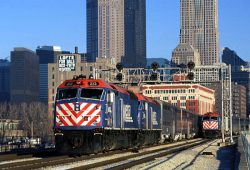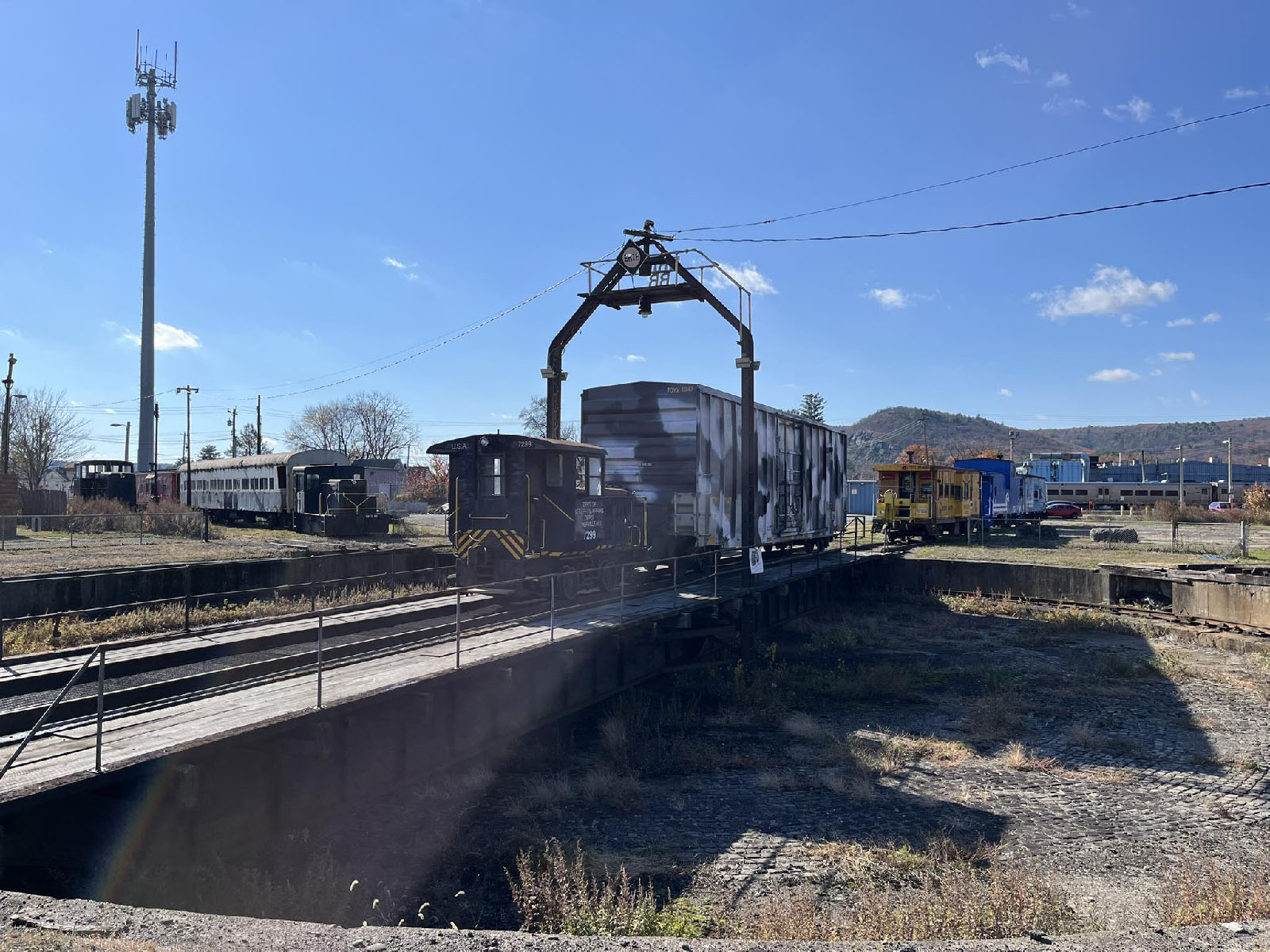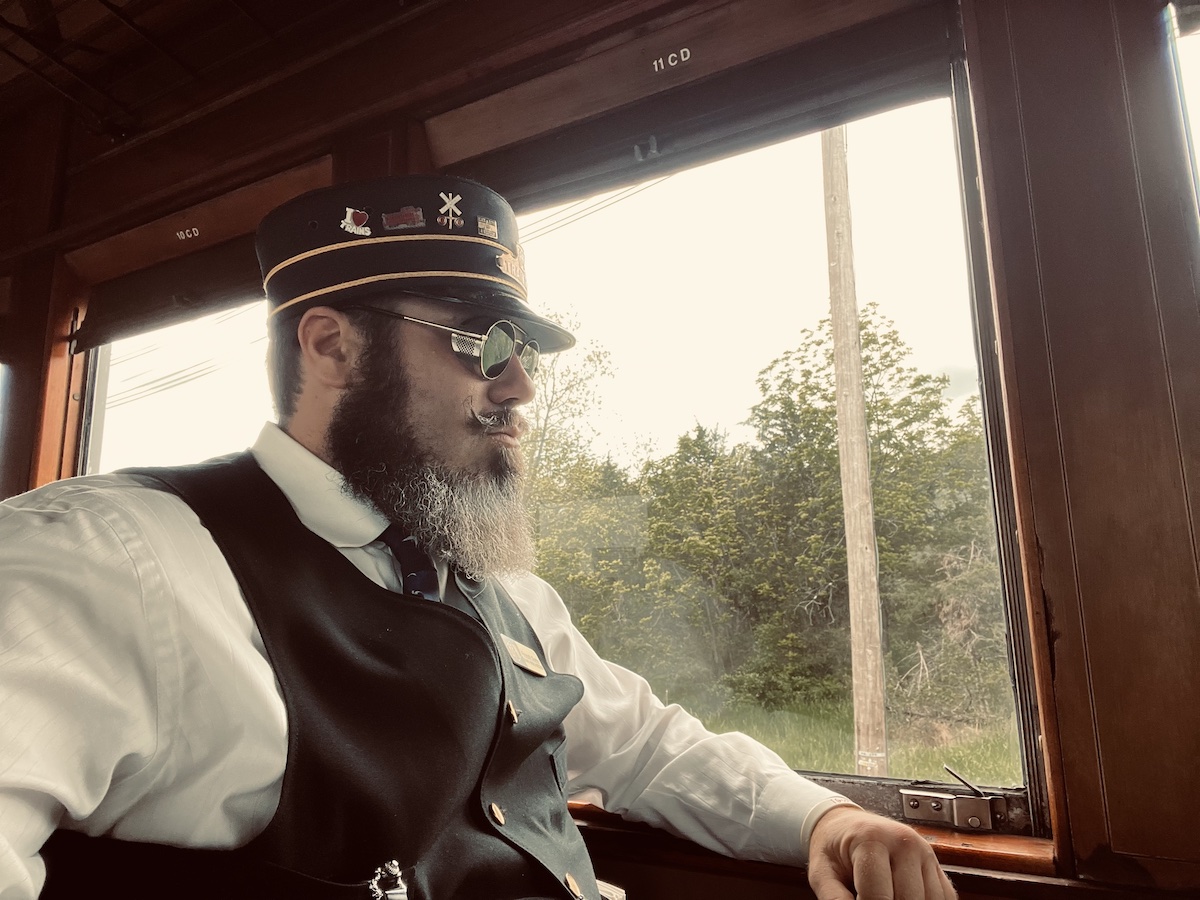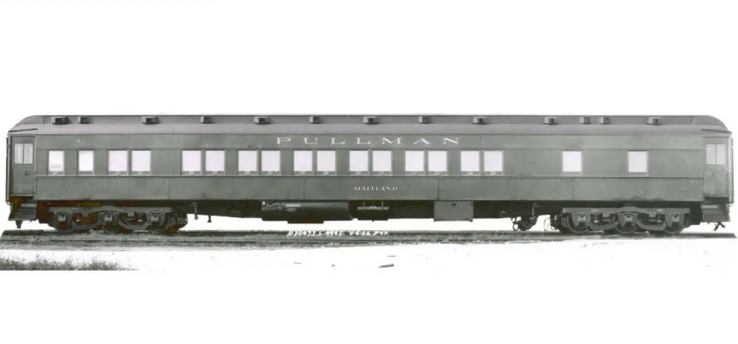Illinois Central, the first railroad west of New York and Philadelphia to offer commuter service, began its operation in 1856. Soon, railroads such as the Rock Island, Chicago & North Western, Milwaukee Road, Chicago, Burlington & Quincy, and the Wabash all developed long-standing commuter services.
That heritage is reflected in the names of some of the lines operated by Metra, Chicago’s commuter rail authority.
Officially known as the Northeast Illinois Regional Commuter Railroad Corporation (NIRC), Metra serves 235 stations on 11 different routes covering 475 miles.
With ridership averaging about 290,000 trips on weekdays, Metra is North America’s second largest commuter railroad.
Trains operate into four downtown Chicago terminals: Union Station, LaSalle Street Station, Ogilvie Transportation Center (formerly the North Western Station) and Millennium Station at Randolph Street.
Metra’s diesel-powered trains are in the charge of F40PHs built between 1977 and 1992 (including the first F40s bought for commuter service, and the final models built by EMD: F40PH-2Ms sporting sloped windshields), and MP36PHs built by MotivePower Inc. (The agency kept two retired EMD F40Cs built by EMD in 1974.)
Bilevel gallery coaches, used on all Metra diesel trains, have been a part of Chicago’s commuter railroad scene since they were first introduced by the Chicago, Burlington & Quincy in 1950. The trains run push-pull, a method of operation first used by commuter trains on the Chicago & North Western in 1959. New gallery cars from Sumitomo Corporation, built in Japan by Nippon Sharyo and assembled by Super Steel in Milwaukee in 2003-2005, will replace one-third of Metra’s 785-car diesel-powered coach fleet, most originally built by the Budd Company, plus some from Pullman-Standard.
On Metra’s Electric district, the former Illinois Central property electrified in 1926, unique bilevel multiple-unit electric cars (nicknamed Highliners) are used, built between 1971 and 1978 by the St. Louis Car Company and Bombardier, and powered via overhead catenary. These cars have been supplemented by electric-bi-levels from Sumitomo delivered in 2006.
Metra was formed in 1984 to manage Chicago’s commuter rail service. The Regional Transportation Authority, previous operators of the service, currently provides funding for Metra, as well as the Chicago Transit Authority and Pace suburban bus system. The RTA had been established in 1974 to coordinate and assist transit planning for six Chicagoland counties. In 1976, RTA began knitting together the city’s disparate commuter operations into a coordinated system, first by negotiating service contracts with the freight railroads which allowed the agency to set fares and schedules, then by taking over specific commuter operations (in particular the Heritage Corridor service from former Illinois Central Gulf, and the SouthWest service from Norfolk & Western, both in 1978), and finally by purchasing equipment and rights of way through its newly created subsidiary NIRC.
First to come under NIRC ownership was the Rock Island District, purchased in December 1982. Successor Metra bought the Milwaukee Road lines in 1986 (leased by the NIRC since 1982), and then Illinois Central Gulf’s electric commuter line in 1987.
On July 1, 1981, the RTA announced a whopping 40 percent fare increase (scaled back to 33 percent in October). Ridership, which had been growing, dropped 25 percent over the following two years, and raised the ire of suburban mass transit districts, which had funded purchases of rolling stock and locomotives. The RTA Amendatory Act of 1983 decentralized Chicago’s transit services and paved the way for Metra to assume management of the suburban rail network.
Today, some commuter rail lines are owned and operated by Metra (the Milwaukee, Rock Island, and Electric districts), while others are operated by freight railroads under a purchase-of-service contract (BNSF and Union Pacific). The remaining lines are owned by freight railroads and host Metra trains under a trackage rights agreement. The North Central line between Franklin Park and Antioch is owned by Canadian National; Heritage Corridor trains to Joliet use tracks owned by Canadian National; and SouthWest Service trains to Manhattan use tracks owned by Norfolk Southern but leased by Metra.
To meet the needs of Chicago’s growing suburban population, some lines have been extended, while on others new stations have been opened. In 1977, Illinois Central Gulf extended its electric line – now Metra Electric’s main line – from Richton to Park Forest South (later renamed University Park). An extension of the Metra Electric 91st Street Branch in South Chicago to a new rail/bus station at 93rd Street is scheduled to open in summer 2001.
Service on the Milwaukee West Line was extended from Elgin to Big Timber in 1986.
On August 16, 1996, Metra inaugurated service on the North Central Line to Antioch, the first new Chicago commuter line since 1926 – and at 53 miles, Metra’s second longest.
In January, 2006, Metra completed service improvements on three routes, made possible by three grants totaling $1.6 billion that Congress awarded Metra in 2001. Service on the Union Pacific West line was extended eight miles to Elburn, with two new stations added and a new coach yard at Elburn. The SouthWest Service was extended 12 miles to Manhattan, with two new stations added and a new coach yard at Manhattan. Weekday train frequencies on Metra’s North Central Service doubled from five to 10 round trips, and four new stations added, after a second main track and signal upgrades were installed on CN’s Waukesha Sub between Franklin Park and Antioch. The grants also included money for the diesel locomotive purchases from MotivePower.
- Union Pacific North Line. Daily service to Waukegan, with limited daily service to Kenosha, Wis., 51.6 miles from Chicago. Serves 26 stations.
- Union Pacific Northwest Line. Daily service to Crystal Lake, with limited daily service to Harvard, 63.1 miles from Chicago. Limited weekday rush-hour service operates on a 7.4-mile branch to McHenry. Serves 22 stations on weekdays, 20 on weekends.
- Union Pacific West Line. Daily service to Geneva, 43.5 miles from Chicago. Serves 18 stations, fewer on weekends.
LaSalle Street Station lines
- Rock Island District. Daily service to Joliet via two parallel routes that split at Gresham and rejoin at Vermont St., Blue Island. The 46.8-mile district serves 24 stations on weekdays, 22 on weekends.
Union Station lines
- North Central Service. Weekday service to Antioch, 52.8 miles. Serves 17 stations. No weekend or holiday service.
- Milwaukee District North Line. Daily service to Fox Lake, 49.5 miles from Chicago. Serves 21 stations.
- Milwaukee District West Line. Daily service to Elgin, with weekday service to Big Timber Road, 39.8 miles from Chicago. Serves 22 stations on weekdays, 16 on weekends.
- Burlington Northern Santa Fe Line. Daily service to Aurora, 37.5 miles from Chicago. Serves 26 stations on weekdays, 21 on weekends.
- Heritage Corridor. Limited rush-hour service to Joliet by way of Summit and Willow Springs, 37.2 miles. Serves 5 stations. No weekend or holiday service.
- SouthWest Service. Weekday service to Orland Park, with limited rush-hour service to Manhattan, 41 miles from Chicago. Serves 12 stations. No weekend or holiday service.
Millennium Station (Randolph St.) lines
- Metra Electric. Daily service to University Park, 31.5 miles from Chicago, and on a 4.7-mile branch to 91st Street in South Chicago. Serves 41 stations. A second branch to Blue Island, 4.4 miles with 7 stations, sees service Monday-Saturday.
Metra Passenger Services
547 West Jackson
Chicago, IL 60661
(312) 322-6777 (Weekdays), and (312) 836-7000 (Evenings and weekends)
Teletype: (312) 322-6774 (Weekdays), and (312) 836-4949 (Evenings and weekends)
www.metrarail.com














